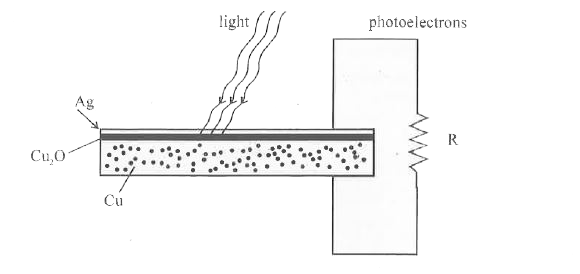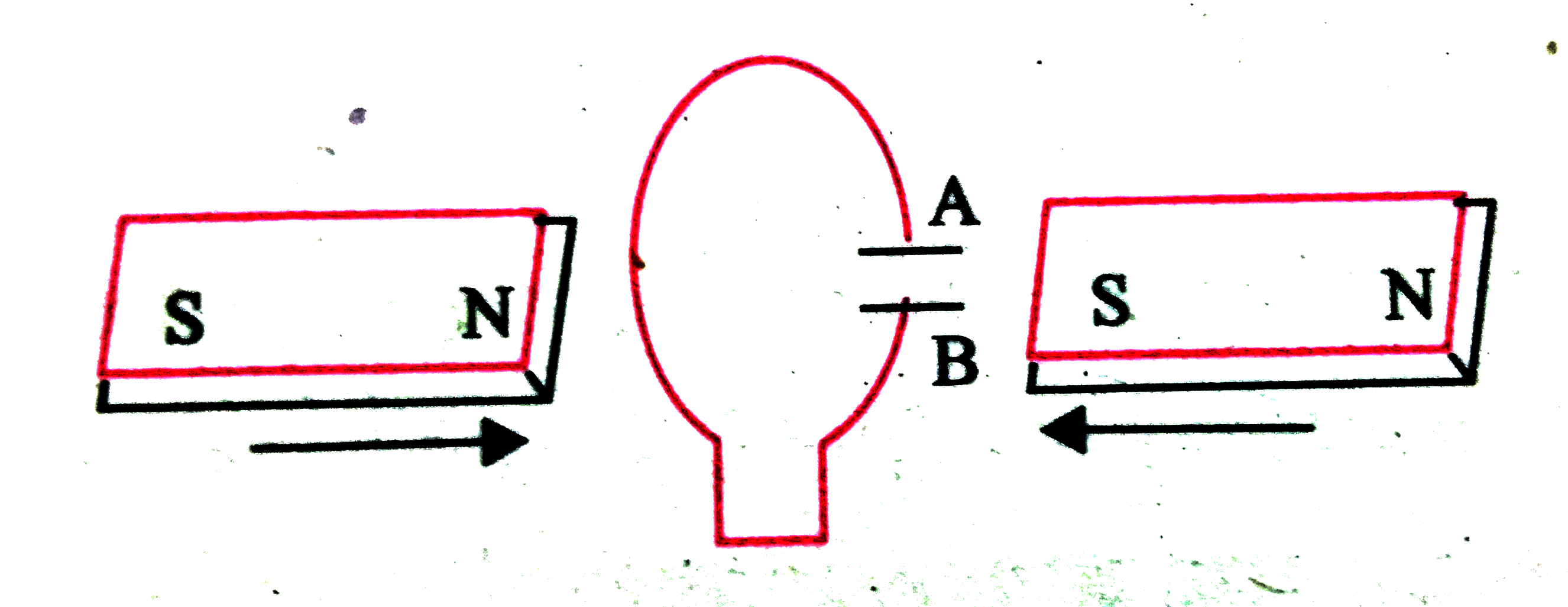
a. What is the purpose of ?
b. Which plate becomes positive?
c. Which plate becomes negative? Solution in Tamil
a. Cuprous oxide is a photosensitive semiconductor.
b. Cu
c. Ag
Topper's Solved these Questions
- BOOK - NEW JOYTHI PUBLICATIONCHAPTER - DUAL NATURE OF RADIATION AND MATTER EXERCISE - CONTINUOUS EVALUATION (ASSIGNMENT)4videos
DUAL NATURE OF RADIATION AND MATTER
- BOOK - NEW JOYTHI PUBLICATIONCHAPTER - DUAL NATURE OF RADIATION AND MATTER EXERCISE - PREVIOUS YEAR QUESTIONS4videos
DUAL NATURE OF RADIATION AND MATTER
- BOOK - NEW JOYTHI PUBLICATIONCHAPTER - DUAL NATURE OF RADIATION AND MATTER EXERCISE - PRACTICE PROBLEMS FOR SELF ASSESSMENT5videos
DUAL NATURE OF RADIATION AND MATTER
- BOOK - NEW JOYTHI PUBLICATIONCHAPTER - CURRENT ELECTRICITYEXERCISE - COMPETITIVE EXAM CORNER37videos
CURRENT ELECTRICITY
- BOOK - NEW JOYTHI PUBLICATIONCHAPTER - ELECTRIC CHARGES AND FIELDS EXERCISE - Competitive Exam Corner20videos
ELECTRIC CHARGES AND FIELDS
Similar Questions
Discuss the various modes of emission of electron.
02:34View SolutionAlbert Einstein, the great physist proposed a clear picture to explain photoelectric effect.
a. Explain Einstein's photo electric equation.
b. Name the quanta of light.02:40View SolutionWhat is the energy of an α particle that has been accelerated through 50,000 V ?
05:19View SolutionAn electric bulb rated 500 W at 100 V is used in a circuit having a 200 V supply. The resistance R that must be put in series with the bulb, so that the bulb draws 500 W is
View SolutionTwo charged spherical conductors of radii R1andR2 are connected by a wire. Then the ratio of surface charge densitites of the spheres σ1/σ2 is
View SolutionIf an object made of substance A is rubbed with an object made of substance B, then A becomes positively charged and B becomes negatively charged. If however, an object made of substance C, then A becomes negatively charged, What will happen if an object made of substance B is rubbed against an object made of substance C? (a) B becomes positively charged and C becomes positively (b) B becomes positively charged and C becomes negatively charged. (c ) B becones negatively charged and C becomes positively charged. (d) B becomes negatively charged and C becomes negatively charged.
02:12View SolutionAt maturity the sieve plates become impregnated with
04:05View SolutionTwo parallel plates capacitors A and B having capacitance of 1 muF and 5 muF are charged separately to the same potential of 100 V. Now, the positive plate of A is connected to the negative plate of B and the negative plate of A to the positive plate of B. Find the final charges on each capacitors.
03:07View Solutionचित्र में संधारित की कौन - सी प्लेट धनात्मक एवं कौन - सी प्लेट ऋणात्मक होगी ?
 03:20View Solution
03:20View SolutionMatch it.
1)Positively charged plate(a)anode2)Negatively charged plate(b)cathodeView Solutionसमान्तर प्लेट संधारित्र की प्लेटों के बीच की दूरी बढाने पर उसकी धारिता ................. हो जाती है।
07:40View SolutionTwo parallel plate condenser A and B having capacitances of 1μFand5μF are charged separately to the same potential of 100V. Now the positive plate of A is connected to the negative plate of B and the negative plate of A to the positive plate of B.
Common potential isView SolutionTwo parallel plate condenser A and B having capacitances of 1 mu F and 5 mu F are charged separately to the same potential of 100V. Now the positive plate of A is connected to the negative plate of B and the negative plate of A to the positive plate of B. Energy stored in capacitor is
02:34View SolutionTwo parallel plate condenser A and B having capacitances of 1 mu F and 5 mu F are charged separately to the same potential of 100V. Now the positive plate of A is connected to the negative plate of B and the negative plate of A to the positive plate of B. Final energy stored in capacitor is
02:13View SolutionTwo parallel plate condensers A and B have capacities 1 mu F and 5 mu F are charged sepe-rately to same potential of 100V. Now the positive plate of A is connected to the negative plate of B and the negative plate of A to the positive of plate of B then
02:29View Solution

